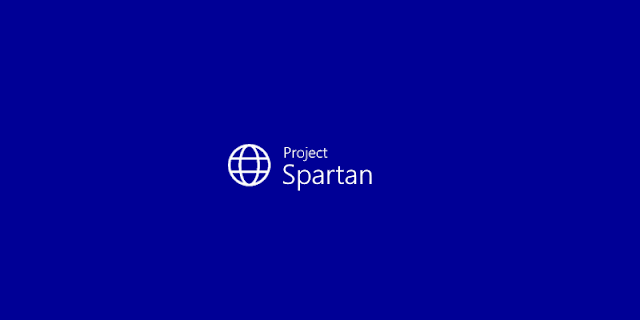Windows gets smarter - OS, Hardware & Everything
January 21, 2015, was truly a day that Microsoft left everyone thinking about the future. Could have sworn that it was from a sci-fi movie (some of the announcements), but it was real (in infancy/under development but real). And like my friend said, it would surely have made Tony Stark happy.
Let's get start with the evolutionary product/ what Microsoft now calls a service rather than a OS.
The OS/Service:
The OS just got better with easy transition for Windows 7 users & better usability for present Windows 8/8.1 users. The notable changes are:
- The inclusion of the Start Menu with elements of both the familiar Windows 7 as well as the Modern UI.
- A One Product Family, One platform & One Store for all approach - Unification Approach.
- Everything opens in Desktop mode as well.
- Simplified settings option for both Phone & PC.
- Cortana for PC.
- Universal Apps across Devices/ Screen Sizes.
- Built-in & intuitive Switching modes from Tab to Laptop form factors.
- Project Spartan instead of IE.
- Xbox App for Windows 10.
- Skype Integration with messaging.
The inclusion of Start Menu, though was a welcome change in the previous build of Windows 10, was a bit annoying for people who had already gotten accustomed to Windows 8/8.1 already. The issue seems to have been dealt with Microsoft by giving an option to the user to choose from either the menu that was in the previous Windows 10 build or a full screen menu that is more true to the Modern UI in my opinion.
There are also switching modes, which make it easier to use the tab-laptop transforming devices. Added to this, now all the windows store apps open in desktop mode as well with the close button that we are so used to. This will surely make it easier for work & also make both mouse-keyboard & touch-type users happy.
Cortana for PC is like Cortana for phones earlier, if not better. Cortana now becomes your assistant across devices using Windows 10, very similar to Google Now (Android). The Difference in Google Now and Cortana seems to be the personality of Cortana, which makes the latter more fun to work with. Also, the integration of Cortana for important things like Project Spartan makes it an all rounder.
It has a simplified settings option now on the PC as well as the Phones. It seems pretty straight forward & easy to use. The new notification area for the phone with toggles for settings is certainly a welcome change too.
Universal apps like word, excel, outlook, calendar across Devices/Screen Sizes is another step towards the unified One Product Family, One platform & One Store for all approach. The demos showed us that how even Power Point presentations with a lot of graphical elements could be run using a capable new Windows phone. If it works as well as was shown then we would surely be seeing happier developers on the Windows 10 app development front as it certainly opens up the reach of each app.
Moving on to the multi-device strategy for Windows 10, the XBOX app on Windows 10 now allows you to own a XBOX and play your games streamed to any of your Windows 10 devices like tabs, PCs etc. Also it takes all your friends, achievements etc from the XBOX everywhere.
Skype integration with messaging for the Windows phones can be annoying as well as helpful at times. It depends on the multi platform compatibility and workability. Very similar to the iMessage on iOS.
Last but not the least is the announcement that Microsoft treats Windows 10 as a service and not a OS. The best part of which is that it will be provided as a free upgrade to Windows 8/8.1/7 users as well as Windows Phone 8.1 users during the 1st year of Windows 10 announcement.
The Hardware & Everything Sci-Fi
Here is where everything gets futuristic and sci-fi. There were only 2 devices introduced and that was all that was required to get the audience dumbstruck.
Windows Surface Hub
The first of the 2, was the Windows Surface Hub, a 4K display screen for businesses. It’s essentially a big screen that lets you showcase presentations, make Skype calls and write on it like a whiteboard – all powered by Windows 10. Whatever you markup on the screen during a meeting, you can also save to OneNote and it can automatically be shared with participants of the meeting once done. This seems pretty straight forward, But the possibilities could be a lot more.
Windows Holographic + HoloLens
This one is a wearable. Goggles to be precise. Called Microsoft HoloLens, it works with Windows Holographic, a new API to add a layer of augmented reality to Windows 10. Developers can now add holograms to their apps with this new technology, viewable through Microsoft HoloLens. The smart goggles can understand users’ spatial responses like gestures and voice in the area surrounding them.
You can also create your own holograms and 3D objects, then print them via HoloStudio. The demo had a woman built a quadcopter on HoloStudio using gestures and voice commands.
The best part about the demo was that you could see how much work had been put into it & the collaboration with the NASA's Jet Propulsion Labs that make it a no nonsense product & the confidence to call upon developers of the Oculus, Magic Leap & Google Glass to develop for Holographic & HoloLens makes a statement in itself.
All the above are brilliant if in reality it works as demoed. Like Joe Belfiore kept saying, this was an early build & it should be better from here on. There remains hope for a cooler and more unified Windows and Microsoft ecosystem that will make all our (PC users' ;-) ) lives a lot more easier.










Comments
Post a Comment